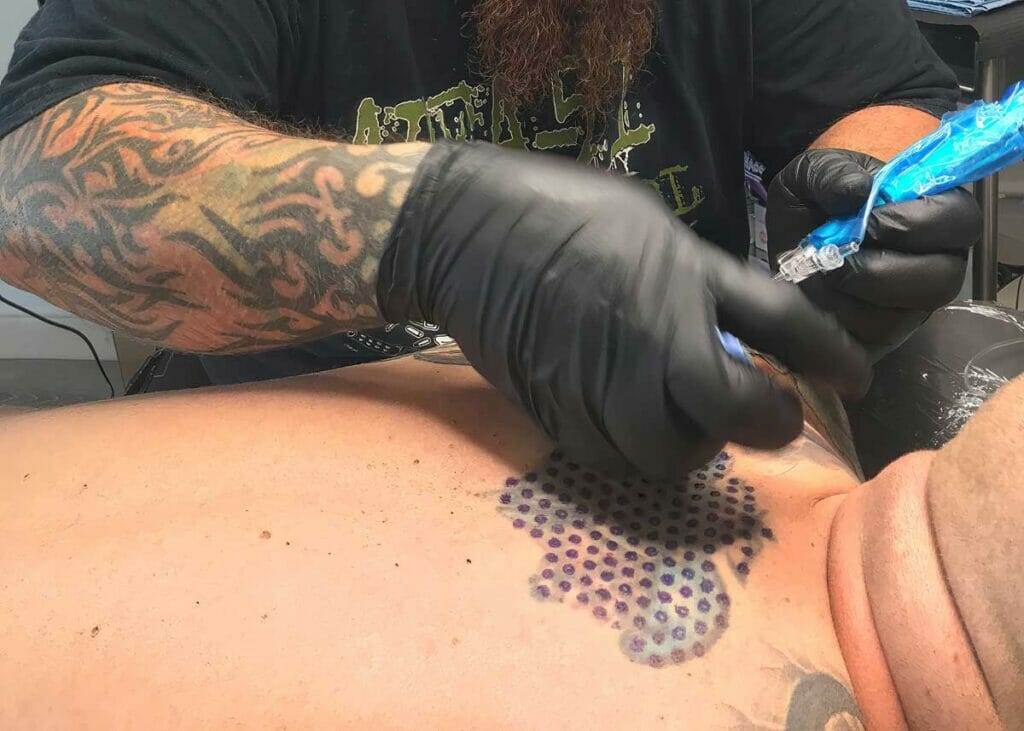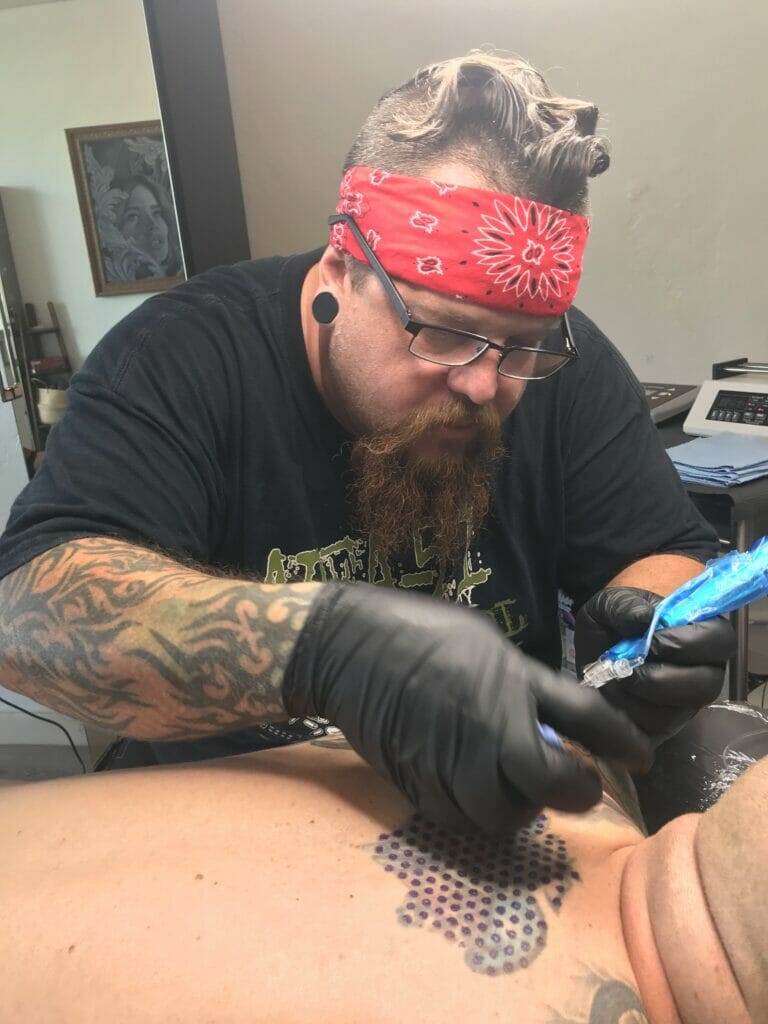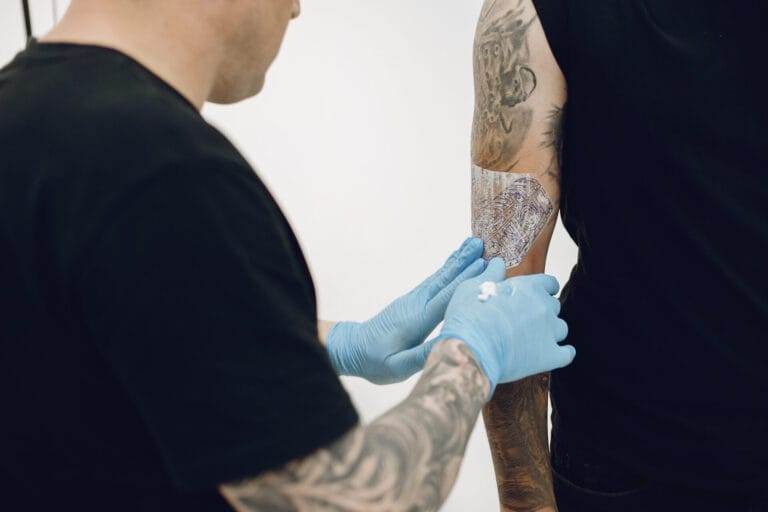In recent years, there has been a significant increase in the popularity of non-laser tattoo removal methods. Traditional laser tattoo removal has long been the go-to option for those looking to remove unwanted tattoos, but many people are now opting for non-laser methods instead. This growing trend can be attributed to a variety of factors, including the limitations of laser tattoo removal and the potential benefits of non-laser methods.
The limitations of laser tattoo removal
Laser tattoo removal works by using high-intensity laser beams to break down the ink particles in the skin. While this method has proven to be effective for many individuals, it does have its limitations. One major limitation is that laser removal is not suitable for all skin types. People with darker skin tones may experience pigmentation changes or scarring as a result of laser treatment.
Additionally, laser tattoo removal can be a lengthy and expensive process. Multiple sessions are often required to achieve satisfactory results, and each session can be quite costly. Furthermore, complete removal of a tattoo with laser technology is not always guaranteed, as some ink colors may be more resistant to laser treatment than others.
How non-laser tattoo removal works
Non-laser tattoo removal methods offer an alternative approach to removing unwanted tattoos. There are several different types of non-laser methods available, including chemical peels and dermabrasion.
Chemical peels involve applying a solution to the skin that causes the top layers to peel off, taking the tattoo ink with them. This method is particularly effective for removing superficial tattoos or those with lighter ink colors.
Dermabrasion, on the other hand, involves using a high-speed rotating brush or diamond wheel to remove the top layers of skin. This process essentially “sands” away the tattoo ink, gradually fading it over time.
The benefits of non-laser tattoo removal
Non-laser tattoo removal methods offer several benefits over traditional laser removal. One major advantage is the potential for faster and more complete removal. While laser removal may require multiple sessions spread out over several months, non-laser methods can often achieve noticeable results in a shorter period of time.
Additionally, non-laser removal methods are generally less expensive than laser treatment. While the upfront cost may be higher for non-laser methods, fewer sessions are typically required, resulting in overall cost savings. This makes non-laser removal a more affordable option for many individuals.
The cost comparison between laser and non-laser tattoo removal

When comparing the cost of laser and non-laser tattoo removal, it is important to consider both the upfront cost and the long-term expenses. Laser tattoo removal typically requires multiple sessions, with each session costing several hundred dollars. This can add up to thousands of dollars over the course of treatment.
Non-laser tattoo removal methods may have a higher upfront cost, as they often require a single session or a series of sessions. However, since fewer sessions are typically needed, the overall cost can be significantly lower than laser treatment.
It is also worth noting that non-laser methods may require additional aftercare products or treatments, which can add to the overall cost. However, these expenses are usually minimal compared to the cost of multiple laser sessions.
The safety and effectiveness of non-laser tattoo removal
Non-laser tattoo removal methods have been proven to be safe and effective when performed by qualified professionals. Chemical peels and dermabrasion have been used for many years in various dermatological procedures and have a well-established safety record.
However, it is important to note that there are potential risks and side effects associated with non-laser tattoo removal. These can include temporary redness, swelling, and discomfort at the treatment site. In rare cases, more serious complications such as infection or scarring may occur.
To minimize these risks, it is crucial to choose a reputable provider who has experience and expertise in non-laser tattoo removal. They will be able to assess your individual situation and determine the most appropriate method for your specific tattoo and skin type.
The role of natural ingredients in non-laser tattoo removal
Many non-laser tattoo removal methods utilize natural ingredients to help fade and remove tattoos. These ingredients can include fruit acids, plant extracts, and other organic compounds. Natural ingredients are often preferred by individuals who are looking for a more holistic approach to tattoo removal.
These natural ingredients work by breaking down the ink particles in the skin, similar to how laser treatment works. However, they tend to be gentler on the skin and may have fewer side effects compared to harsher chemical-based treatments.
The aftercare process for non-laser tattoo removal
Aftercare is an important part of the non-laser tattoo removal process. Following the provider’s instructions for aftercare will help promote healing and minimize the risk of complications.
After treatment, it is common for the treated area to be red, swollen, or tender. Applying a cold compress or taking over-the-counter pain medication can help alleviate these symptoms. It is also important to keep the treated area clean and dry, and to avoid exposing it to excessive heat or sunlight.
The provider may also recommend using specific aftercare products, such as moisturizers or ointments, to aid in the healing process. It is important to follow these recommendations and avoid using any products that may irritate the skin.
The potential risks and side effects of non-laser tattoo removal
While non-laser tattoo removal methods are generally safe, there are potential risks and side effects that should be considered. These can include temporary redness, swelling, and discomfort at the treatment site. In rare cases, more serious complications such as infection or scarring may occur.
To minimize these risks, it is important to choose a qualified and experienced provider who can assess your individual situation and determine the most appropriate method for your specific tattoo and skin type. It is also crucial to follow all aftercare instructions provided by the provider to promote healing and minimize the risk of complications.

Making the decision to remove a tattoo with non-laser technology
In conclusion, non-laser tattoo removal methods offer a viable alternative to traditional laser removal. They provide several benefits, including potentially faster and more complete removal, as well as cost savings in the long run.
However, it is important to carefully consider the potential risks and side effects associated with non-laser methods. Choosing a reputable provider and following all aftercare instructions will help minimize these risks and ensure a safe and effective treatment.
Ultimately, the decision to remove a tattoo with non-laser technology should be made after thorough research and consultation with a qualified professional. By weighing the benefits against the potential risks, individuals can make an informed decision that aligns with their personal goals and preferences.








